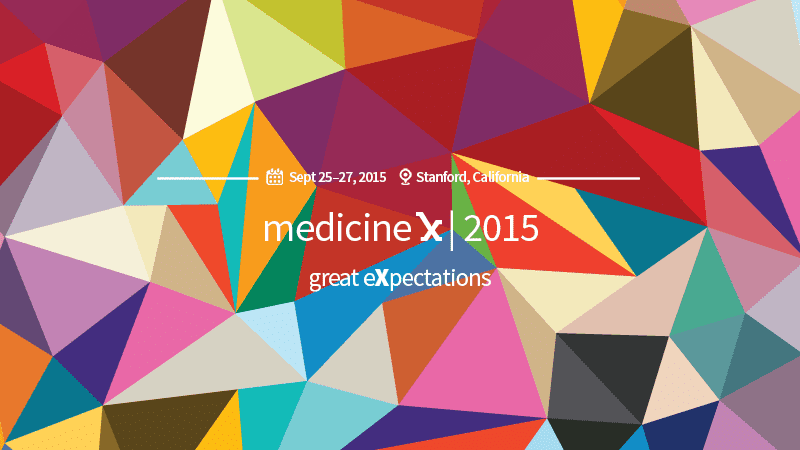Once a patient sets up an account with a site like Gliimpse and tells it the patient-side login and password for a particular hospital or health system (many electronic medical records systems now feature patient portals), the software collects the medical records electronically and re-displays the information chronologically and in a more organized fashion.
Record Collections, Remixed
The goal is that patients can look at line graphs demonstrating their increased number of steps over time, decreasing  cholesterol, and the like.
cholesterol, and the like.
Several such Personal Health Record (PHR) companies offer paid services that do the legwork of collecting old medical records and lab results dating back years. The companies encourage health professionals to engage their patients by directing them toward personal health record sites, emphasizing that care can improve when the patients can easily see their data on computers and mobile devices.
The big question here is whether tools like Gliimpse or Flow Health will burden health professionals with lots of extra work due to more questions from newly-engaged patients.
In the Master Class sessions, Robert Pearl, MD, a plastic surgeon who is also the CEO of Permanente Medical Group, discussed the Affordable Care Act and its effects on consumer behavior. Pearl detailed the rise in individual financial responsibility and cost-sharing in the form of medical deductibles. Often, these deductibles are $5,000 or more, and this upfront cost dissuades many patients from seeking all but the most crucial healthcare services.
Looking into the near future, Pearl said he believes that employer-sponsored health care plans will become very rare as employers try to rein in costs. Many of us, despite having good jobs, will be participating in insurance exchanges and paying for our own health insurance premiums. Thus, sensitivity to costs and to how patients perceive value will be very important to anyone involved in healthcare in the coming years.
Dr. Uber Will See You…Now!
The “Uberization” of medicine was another hot topic at MedX—one that provoked some controversy.
Dr. Topol, on one hand, discussed an app called Heal, hailing (no pun intended) the doctor-to-your-door tool as an example of the technological revolution improving medicine. Currently operating in the Los Angeles and San Francisco areas, Heal promises patients “Background-checked, licensed primary care physicians on demand or on your schedule, arriving when it’s convenient for you.” These tech-enabled house-calls cost the patients $99 per visit, covering basic check-ups and on-site blood work. Heal says other services such as ultrasound exams and vaccines are in the works.
Similar companies like Pager, Dose, and Curbside Care have established similar on-demand house call services in other markets like New York City, Nashville and Philadelphia.
Unlike Topol, Skip Fleshman, a venture capitalist with Asset Management Ventures, wasn’t so bullish about the future of these quickie services.
Referencing patient sensitivity to cost, Fleshman stated that, “$400 was the minimum” fee that would be needed to make a patient service model like Heal’s sustainable in the long run. He contended that most patients would simply not be willing to pay such an amount.
Remaking Medical Research
If the new wave of mobile technology is shaking up the status quo of clinical practice, it has potential to be even more disruptive in clinical research.
Consider Apple’s ResearchKit application.
Developed and launched by Apple, ResearchKit provides a framework for medical researchers to take advantage of the ubiquity, mobility and data storage/transmission capacity of the iPhone. In terms of recruiting people for studies, it has potential to obviate the tedious and outmoded methods of sending random letters and advertising in print media.
It eliminates geographic restrictions by enabling people at far distances from research centers to participate in studies, and it facilitates data collection on a weekly, daily or even by-the-minute basis, rather than at 3 month intervals as is typical in standard research protocols.
The most subtle technology on a phone, like an accelerometer, can be used to feed minute-to-minute information on the patient to a researcher, who has designed her research study based on the Research Kit open platform. For example, one could find out approximately how many times per day a patient has a tremor in her hand, estimating it from the number of the times the phone seems to shake and the amount of time she actually spends holding the phone. For integrative practices that run their own clinical trials, ResearchKit could be an invaluable tool.
At MedX, doctors and patients reflected on their experiences using ResearchKit. Physicians marveled at the possibility of literally being inside their research subjects’ phones. Stanley Shaw, MD, a Massachusetts General Hospital researcher, liked the “day by day” aspect of seeing how subjects were doing, instead of the snapshot effect of a few visits over the course of a study.
But he also noted that ResearchKit reminded him that clinical trial participation involves the sharing of very sensitive data—a “privilege” on the part of a researcher. That sensitivity, and the trust involved, need to be remembered, honored, and protected.
Another way that technology is changing clinical trials is by improving the use of clinical trial registries. Rachel Nosheny, an associate research scientist in the department of radiology at the University of California, San Francisco, detailed the Brain Health Registry, a database of thousands of actively studied individuals.







